Last Updated on November 14, 2023
If you’re frustrated by time-consuming scrubbing that still fails to remove dirt and grime from your bathroom floors, bleach could be the answer.
Not only does this powerful cleaning agent eliminate even the toughest of stains, but it also kills germs on contact. And you don’t have to break the bank, bleach is easy on your wallet too.
You can rejuvenate your bathroom floors with a few easy steps. From readying the surface to crafting an effective bleach solution and applying it carefully, the results will be spotless. But, the use of this household cleaner has both benefits and drawbacks, as well as safety precautions that should be taken.
Read on to learn how to safely use bleach to clean your bathroom floor, what benefits it can provide, and how it might cause harm if misused.
How to Clean Bathroom Floor With Bleach: Simple Steps
Cleaning your bathroom floor with bleach may seem like a quick and easy job, but it’s important to take caution. If you don’t follow all the steps accurately, you could be left with more than just an unsanitary area: You might end up facing potential hazards as well.

Following are the steps you need to take:
Gather Supplies:
- Gloves
- Mop
- Bucket
- Bleach
- Towel
- Dry Rags or Sponges
- Brush
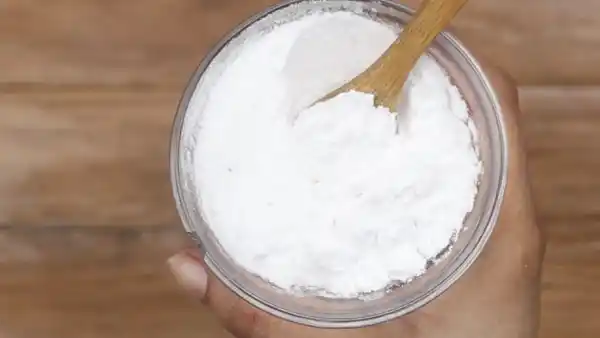
Step 1: Prepare the Space for Cleaning
The first step in cleaning a bathroom floor with bleach is to prepare the area for cleaning. This means opening windows or using fans to increase ventilation in order to reduce any potential risk of chemical inhalation from fumes created by mixing bleach with water.
All items should be removed from the floor area and placed on a separate surface so that nothing gets damaged during cleaning. The space should then be vacuumed or swept in order to remove any debris or dust particles.
Step 2: Creating a Bleach Solution
Making sure you have the correct bleach measurements for your gallon of water is key for cleaning your bathroom effectively. Start by filling up a gallon container with warm water and pour in 1/2 to 3/4 cup of chlorine bleach. Make sure that all the contents are thoroughly combined using a stirring rod or spoon before applying them to your floors.
The ratio of one part bleach to ten parts water works best, so make sure that you measure out correctly. Be sure not to exceed this ratio. Too much bleach may cause damage or discoloration over time.
Step 3: Applying Solution to Floor
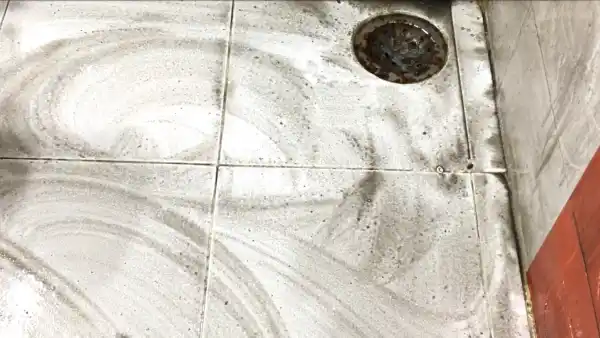
Before applying the bleach solution to your bathroom floor, make sure all surfaces are swept and cleared of any dirt or debris. Start by using a mop or sponge to spread the solution evenly across the floor’s surface, ensuring you reach all edges and corners without leaving gaps or missed spots.
When mopping, be careful not to over-saturate any sections with too much liquid. Instead, focus on light strokes that let you fully cover each area without soaking it too much. Once done, let it sit for 5-10 minutes so that it has time to soak into the surface more effectively.
Step 4: Scrubbing the Floor Vigorously
Using an old toothbrush or other bristled tool, start scrubbing away at dirt and grime that has built up on surfaces over time. Make sure to clean all areas of the bathroom, including the corners and edges.
Also, don’t forget to clean the grout lines between tiles. These areas often get dirtier than other parts of bathrooms because they are so small.
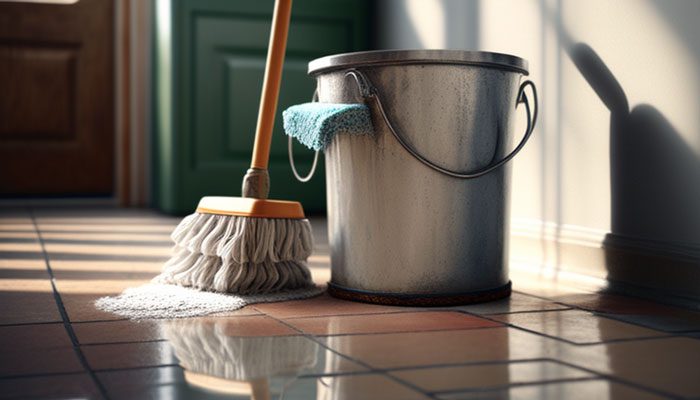
Be careful when applying pressure while scrubbing so as not to damage surfaces beneath them if tiles are being used in your bathroom’s flooring material.
Step 5: Rinsing the Floors Thoroughly With Clean Water
Once satisfied that all germs were killed off due to sitting & scrubbing your floors using chlorine bleach solutions, rinse them thoroughly using clean & fresh water only. Pay special attention to ensuring no traces are left behind upon rinsing.
Ensure that, before moving on to the last step, there is no trace of bleach left on your floors after washing off any leftover soap scum.
Step 6: Drying the Floors
All excess moisture must be removed from surfaces after rinsing for them not only to look better but also to stay cleaner for longer periods of time. Using either a squeegee mop towel or vacuum cleaner will help achieve optimum drying results.
Also, adding fans or open windows near damp areas can help speed up drying times depending on how much air circulation there is in the room already. Generally speaking, try not to leave wet surfaces unattended.
Cleaning the Bathroom Floor With Bleach: Pros And Cons

Taking the time to consider both the benefits and drawbacks of using bleach in your cleaning can help you make an informed decision that best suits your needs. Here are some of the benefits and drawbacks to consider:
Pros:
Kills Germs and Disinfects
Bleach is used on bathroom floors because it disinfects and kills germs on the surface. Not only does it kill bacteria, fungi, and viruses, but it also eliminates odors caused by mold and mildew. This means that not only will your bathroom be germ-free but also odor-free.
Removes Tough Stains
Bleach is incredibly effective at removing tough, stubborn stains from surfaces like tile floors, grout lines, and more. With just a few swipes of a bleach cleanser, you can easily remove built-up dirt, grime, and other debris from the floor.
Cleans and Whitens Grout Lines
For those with a tile floor bathroom, bleach can help keep grout lines clean and bright white even after extended use. This is especially useful if you’re dealing with mold or mildew build-up in the grout surrounding your bathroom floor tile.
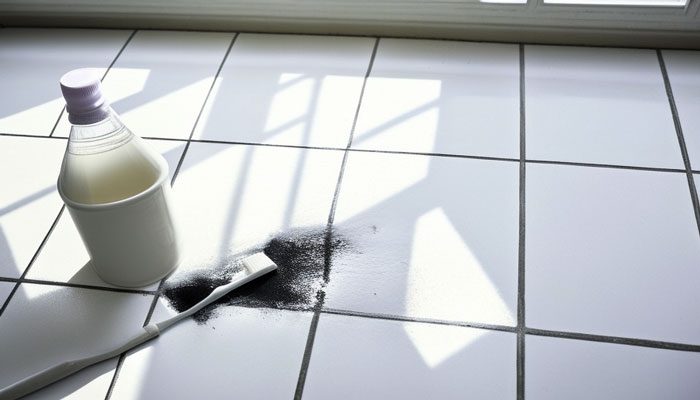
Cleaning Alternative at a Low Cost
Using bleach as a cleaning alternative for your bathroom floor is incredibly cost-effective. Using this instead of buying an expensive bathroom cleaner or hiring professionals can save you a lot of money since it’s inexpensive and easy to buy.
Long-Lasting Results
Since bleach disinfects surfaces while killing bacteria, fungi, and viruses effectively, it leaves behind long-lasting results. Not only will your bathroom be free of germs, but it will also sparkle after every deep cleaning session.
Cons:
Can Damage the Bathroom Floor: The corrosive nature of bleach can damage certain surfaces, including certain metals and grout. This can result in discoloration, staining, and cracking of the flooring material. Aside from that, using too much and frequently using bleach can cause permanent damage to the floor.
Bleach Is Dangerous to Humans: Ingesting bleach can be very harmful to people and animals. It can cause burns to the throat and lips and other problems like vomiting and difficulty breathing. When using bleach for cleaning, ensure you follow the safety instructions at all times.
Bleach Reacts With Certain Household Chemicals: Using bleach with other household chemicals like ammonia could create poisonous fumes. This is because the two chemicals would have a reaction that creates chloramine gas. Which is very poisonous and not safe for people to breathe in.
Bleach Is Not Eco-Friendly: Chlorine-based bleaches often contain toxic ingredients for the environment. Some can pollute the groundwater and hurt fish and other animals. So it is not a good idea to regularly use bleach if you want to protect our planet’s natural resources.
Is It Okay to Use Bleach Straight On the Bathroom Floor?
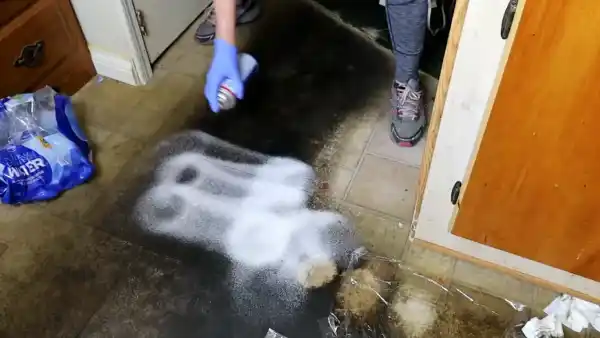
No, using bleach directly on bathroom floors is not recommended. Bleach is a powerful chemical that can cause serious harm if used improperly. If you decide to use bleach on your bathroom floor, it must be very carefully diluted in water.
Do not mix bleach with other household cleaners, as this may create hazardous fumes that can irritate the skin, eyes, and lungs. Undiluted bleach will also damage most surfaces and can lead to the discoloration of shower tiles or other materials on your bathroom floor.
What Happens If Bleach Sits Too Long On the Bathroom Floor?
If bleach sits on a bathroom floor for too long, it can cause discoloration, etching, and other forms of damage to the floor surface. Bleach is a highly caustic material that can corrode and weaken tile grout, leading to cracks and crumbling of the grout lines.
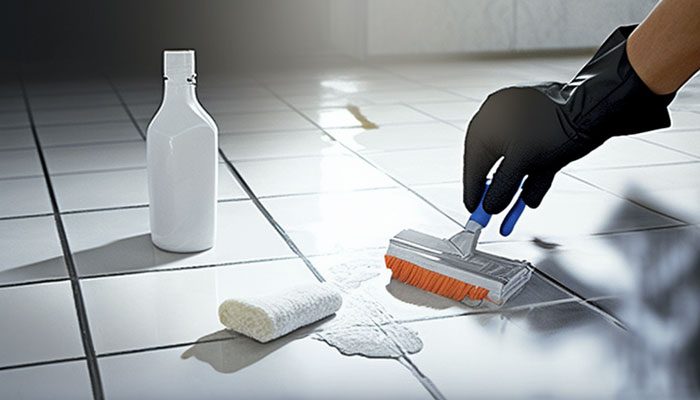
It can also cause permanent discoloration and fading of floor colors or patterns. Bleach can also become corrosive if left on the floor for too long, eroding the sealant between tiles. This weakens its bond and leads to water seepage behind tiles, which may cause mold growth.
Also, the tile sealant or grout may further be damaged if excessive water is used to clean up excess bleach on the bathroom floor. You can easily clean bleach spills from bathroom floors by wiping them down and rinsing them with plain water.
Do You Use Hot or Cold Water To Clean The Bathroom Floor With Bleach?
When using bleach to clean a bathroom floor, diluting it in cold water is important to maximize its effectiveness. Hot water will not act as an effective cleaning solution since the chemicals that make up bleach react best when used in cooler temperatures.
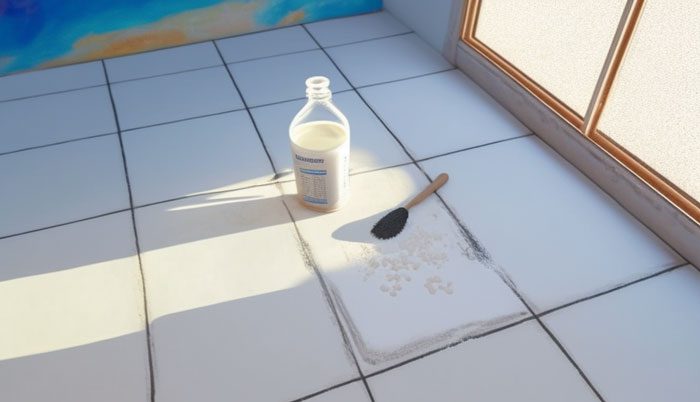
Bleach works by breaking apart bonds between dirt and the surface being cleaned, so it is necessary to use cold water for this process to occur properly. Aside from that, hot water can also lead to an increased risk of skin irritation if exposed directly.
To prevent these problems, bleach should generally be cleaned with cold water.
Can You Mix Vinegar And Bleach to Mop the Bathroom Floor?

No, under no circumstances should you ever mix vinegar and bleach when mopping your bathroom floor or any other surface in your home environment. When these two substances are mixed together, they produce hazardous fumes.
Both are dangerous for human health and damaging to surrounding surfaces due to their corrosive properties. Also, mixing vinegar and bleach could render either substance less effective at performing its intended purpose.
Achieve Sparkle and Shine: Bleach Bathroom Floors
With just a short amount of effort, you can be on your way to having pristine bathroom floors. Employing the power of bleach is an easy and highly effective solution. By following our guide above, you will have sparkling clean floors in no time.
Although safety should always be considered, wear gloves when using bleach, and don’t let it sit for too long on one spot as this might cause damage.
Also, ensure that you are well-ventilated when using bleach, as the fumes can be harmful if inhaled in large amounts. With these tips in mind, bleaching the bathroom floor will ensure that your home is germ-free and sparkling.
So don’t hesitate to take control of your home hygiene today.


